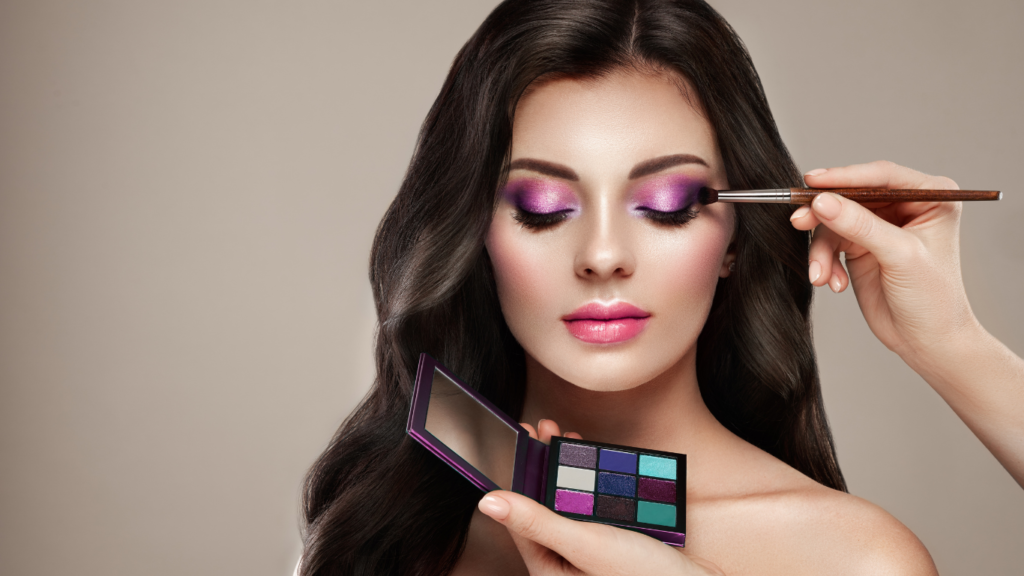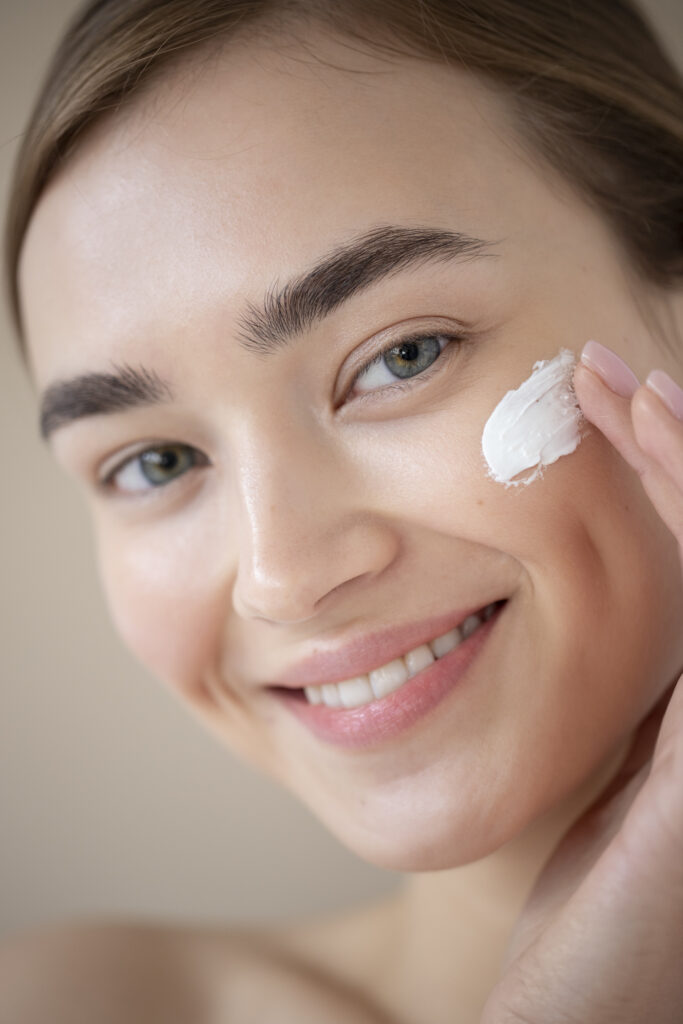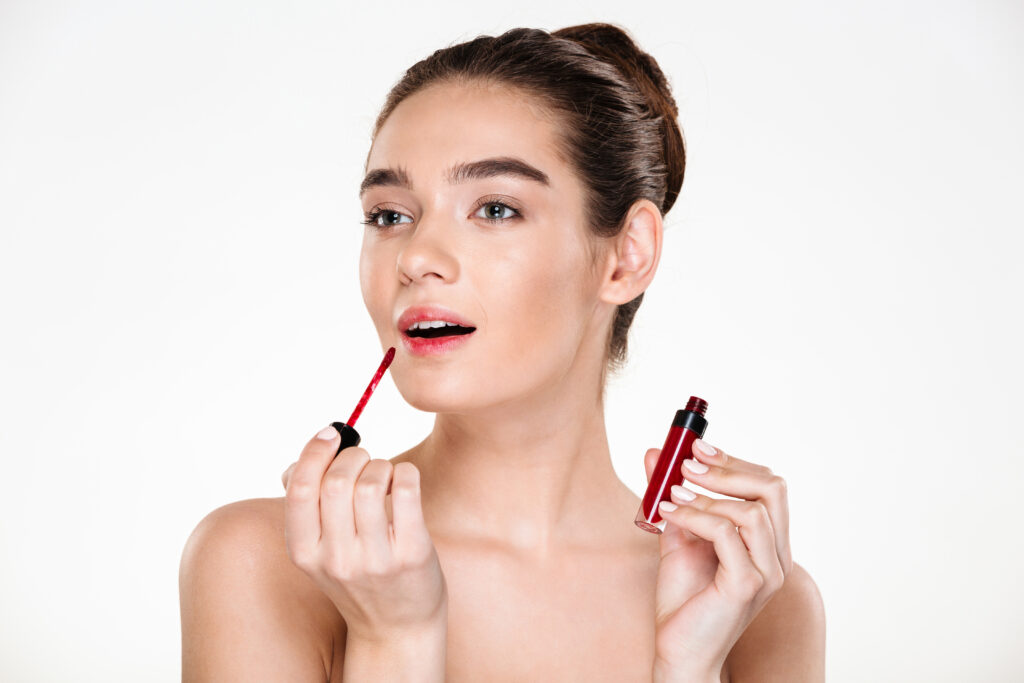Calling all Makeup Beginners! This Expert-Approved Makeup Guide Is for You .

Have you ever found yourself shopping for new beauty products and feeling totally confused over why there were so many options? Do you really need to contour your face and apply bronzer? What’s the difference between an eyebrow pencil and an eyebrow gel (and how do you even fill in your eyebrows)? After a while, your shopping cart can seem redundant, while every YouTube makeup tutorial can simply sound like noise. The good news? If you feel like this, you’re not alone. Whether you need a makeup for beginners tutorial, or you love trying all the latest beauty trends, we’re giving you a little refresh on all the basics.
Buckle up, because we’re about to school you with our crash course in simple, must-know makeup knowledge. Say goodbye to creasing, learn how to make dry skin appear hydrated (and oily skin appear matte), get the best use of makeup brushes, eyeshadow palettes, lip balm, and more. We’ve got the best hacks for how to apply makeup for beginners, thanks to makeup artist tips and tricks. Whether you want to up your face makeup game or turn heads with a killer eye makeup look straight from Sephora, these makeup tips from the pros (with our own IPSY editor input as well) will have you making a mad dash for the drugstore or beauty supply store (depending on the makeup products you fancy). Now, what are you waiting for? Keep scrolling and get to applying!
1. Prep Your Skin
Before you even reach for makeup, it’s crucial that you prep your skin with skincare. “Always cleanse and moisturize for your skin type,” says Sesnek. “Makeup will never lay properly without it.” When your skin isn’t properly prepped, you won’t be able to achieve an even, flawless finish. Instead, your foundation will look heavy and gravitate toward the dry parts of your complexion while your concealer gets cakey.

2. Apply Primer
Not all primers are created equal, so to achieve the best results, it’s best to select the right primer for your skin type. We also rounded up the best primers according to Ipster reviews if you need help picking the perfect primer for your skin. “Apply primer in fine, sheer layers,” says Sesnek. If you use a heavy hand, the primer will start to ball or pill (not the look we’re going for). Instead, we focus a thin coat on our forehead, cheeks, and chin. “This allows it to blur and mattify in these areas (aka. the T-zone), which are usually the areas that are the oiliest.”

3. Grab Your Foundation and Concealer
Now that your skin is prepped and primed, you can start applying your makeup. While typically, you’d start with foundation first and then concealer, occasionally we reach for concealer first. If you’re unsure, our IPSY story on whether to apply foundation or concealer first is a great refresher.
We dab a few dots of foundation on the T-zone, focusing on the forehead, nose, cheeks, and chin. Next, we recommendusing a foundation brush to blend it in. While you can also certainly use a makeup sponge or even your fingers, using a foundation brush is quick and easy, making it a great option for beginners (and anyone who’s looking to simplify their makeup routine). To achieve a natural finish, start with a small amount of product and blend up and out. For more on that technique, check out our story on how to apply foundation with a brush.
Now that your foundation is applied, you’re ready to apply concealer. Focus on any areas you want to conceal: under the eyes, around the nostrils, and any blemishes or dark spots. When it comes to covering up, it’s important to dab, never drag. “When applying concealer, you never want to spread it, but always dab it in place, allowing it to saturate the area you are trying to cover,” says Castro.
Spot apply on blemishes and lightly dab, using either your ring finger, a concealer brush, or sponge. To conceal under the eyes, draw two inverted triangles under your eyes and blend the edges into the foundation by lightly dabbing. Not only is the upside-down triangle technique pretty foolproof, but it also brightens up the entire face. The end result? A gorgeous glow.

4. Set Your Base
We swipe a brush or velvet puff into your setting powder, and tap it to remove any excess. We always want to ensure that it’s evenly covered before applying it to the skin. Next, press it into your face to ensure you don’t move your makeup around in the application process. Focus on areas that often seem to need a touch-up throughout the day (typically the T-zone). If you have a special occasion or just want to create a more airbrushed finish, you could also “bake” your makeup

5. Create Dimension
Contour comes in powder, liquid, and cream formulas, with powder being the most foolproof and therefore ideal for beginners. Using an angled brush, focus on the areas you want to create dimension. “I always like to start under the jawline first,” says Sesnek. Next, place contour under the cheekbones, around your hairline, and on the sides of your nose. “Contour takes a little longer to perfect but it makes a world of difference, especially in photos,” Sesnek adds. Check out our tips on contouring based on your face shape to take your glam to the next level.
If you’re still slightly intimidated by the idea of contouring, Sesnek recommends practicing with a bronzer. “Use a beige-y or non-orange matte bronzer to get your skills up,” he says. Apply the bronzer under the jawline, on the sides of the cheeks, and the perimeter of the forehead, just like you would with contour. The beauty of practicing with bronzer? “There is more wiggle room, as it tends to be more forgiving,” he adds.
When it’s time to apply highlighter, we recommend focusing on the “high” points of your face that the sun would naturally hit. “Adding highlighter above cheekbones, by the eyebrow arch, down the bridge of the nose and blending very well will give the most realistic dimension,” says Sesnek. While highlighter comes in a variety of forms, our team mostly opted for pressed powder highlighters when first learning to do makeup, since it’s the simplest for beginners to use. To apply, dip your brush in the product and tap it to remove excess powder. Next, lightly glide it over the high points mentioned above. If you’re not sure which one is right for you, check out a few of our favorite highlighters first.

7. Focus on Your Eye Makeup
When it comes time to apply eye makeup, the choice is really yours. Do you want to create a natural makeup look for the day? A smokey eye for date night? Do you feel like trying your hand at the edgy negative space liner for drinks with friends? Depending on where you’re headed and what you plan on wearing, you can tailor your eye makeup to match your mood. Our rule of thumb is to always have eyeshadow, eyeliner, and mascara on hand—everything else is up to you.
Once you’ve applied your eyeshadow, you can move on to your eyeliner. “As a beginner, I would use a creamy, non-waterproof pencil closest to the lashes and start slowly until you become more comfortable applying eyeliner or adding wings or feline flicks,” says Sesnek. Keep Q-tips close by for fuss-free cleanup.
Brows deserve attention all on their own. You can either make your brows look fuller or enhance your natural shape using a variety of products, like brow pencils, powders, or gels. If you aren’t sure which product is right for you, stick to these guidelines: Use a pencil for the most natural-looking approach that mimics your real hair. Use a brow powder if you want to fill in sparse spots. And finally, whip out the brow gel when you need to keep unruly brows in place. “I personally use all three formulas, sometimes all on the same set of brows,” says Sesnek.
Castro’s favorite eyebrow formula is the combination of pencil and brow powder. “It simply adds dimension and the powder sets the pencil in place guaranteeing longevity and a more natural look,” he says.

8. Swipe on Your Lip Products
If using a lip primer, prep lips before you begin. Next, use your lip liner to outline your mouth. We’ve been able to create the illusion of a larger pout by contouring, or lining slightly over our lips. Next, fill in your lips with liner. Use this as an outline and apply your lipstick. For more tips, check out our comprehensive guide to applying lipstick like a pro.
With these expert tips, the right products, and a little practice, you’re ready to take your makeup routine to the next level. It’s all about expressing your creativity and finding the look that makes you feel like the most confident version of you. Most importantly, remember that how to put on makeup properly starts with going at your own pace.

